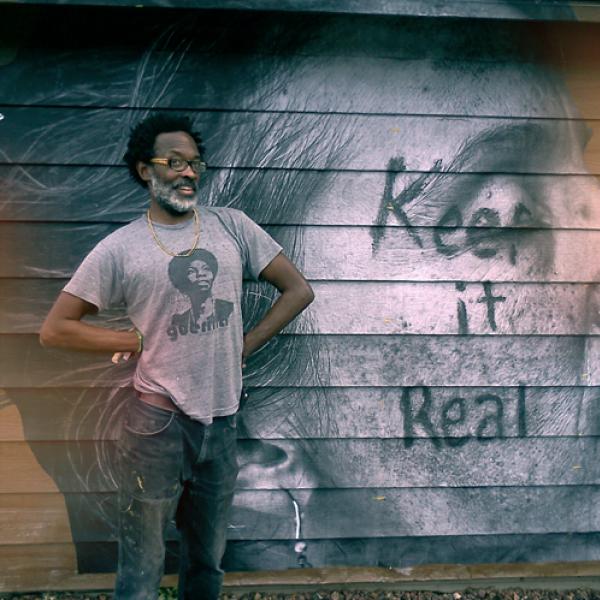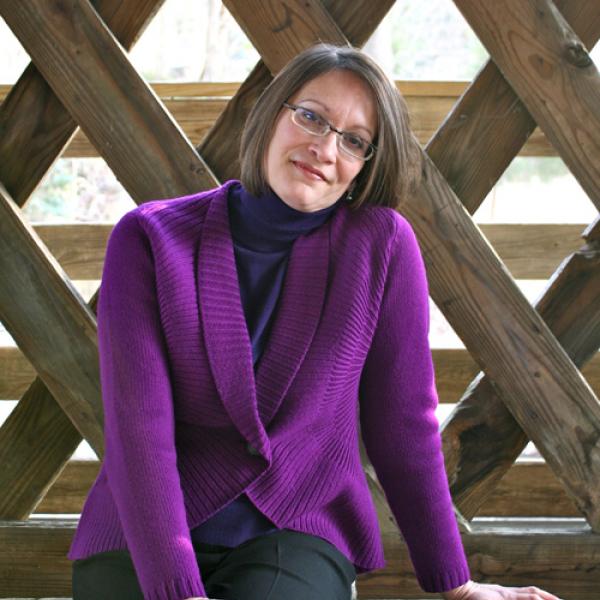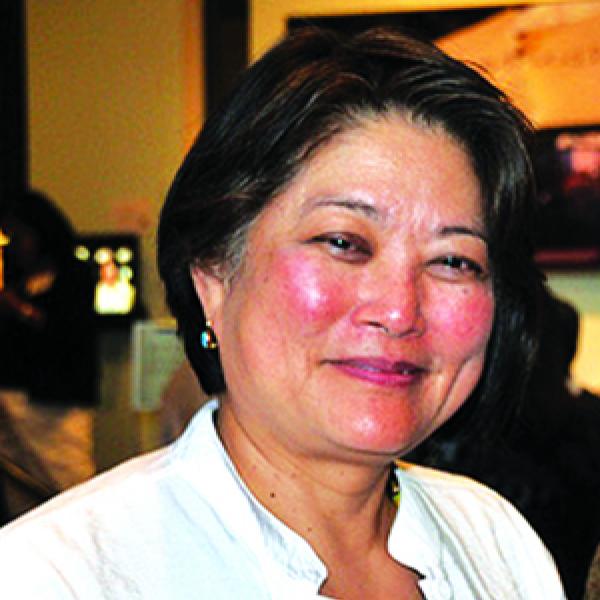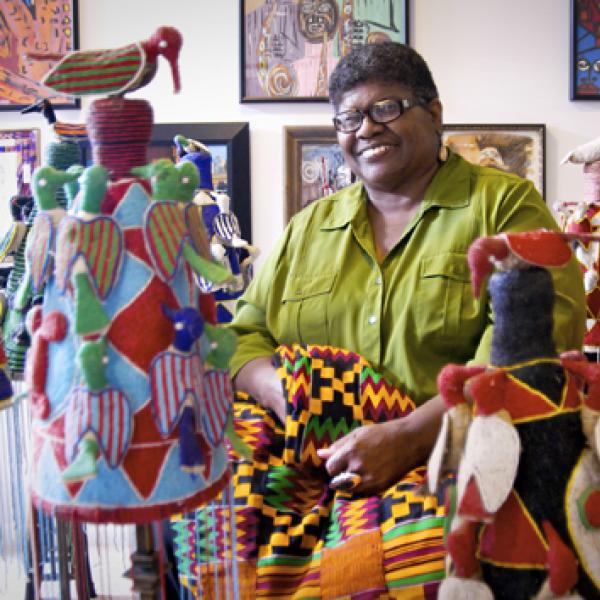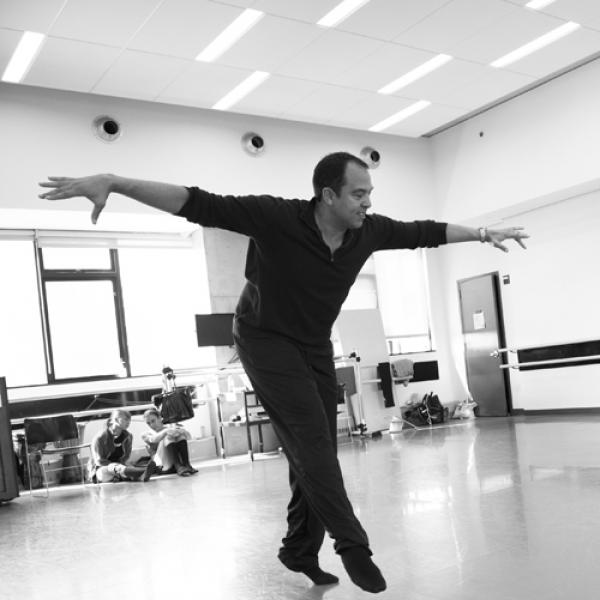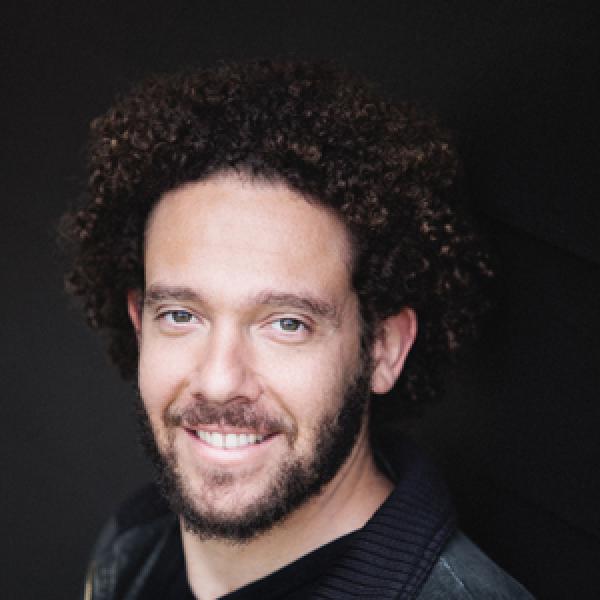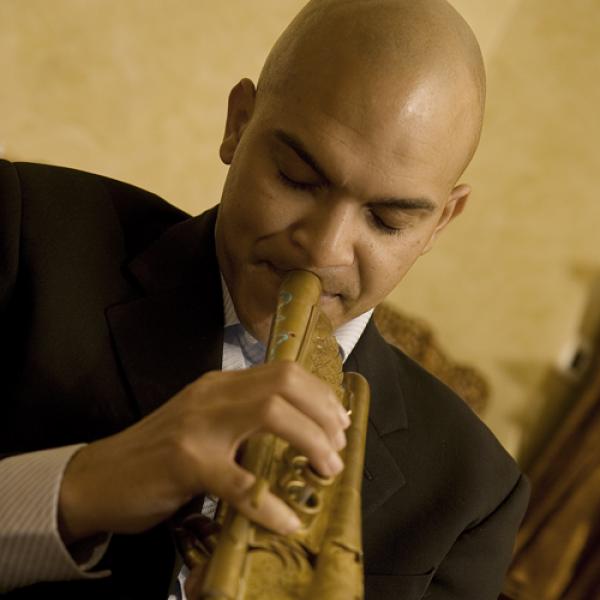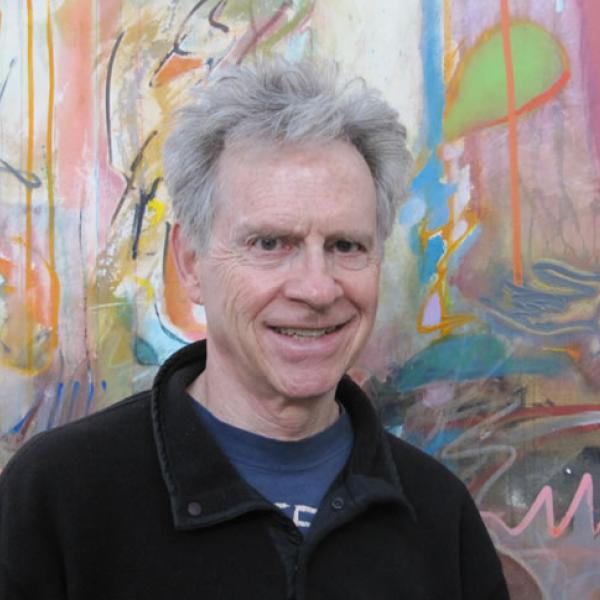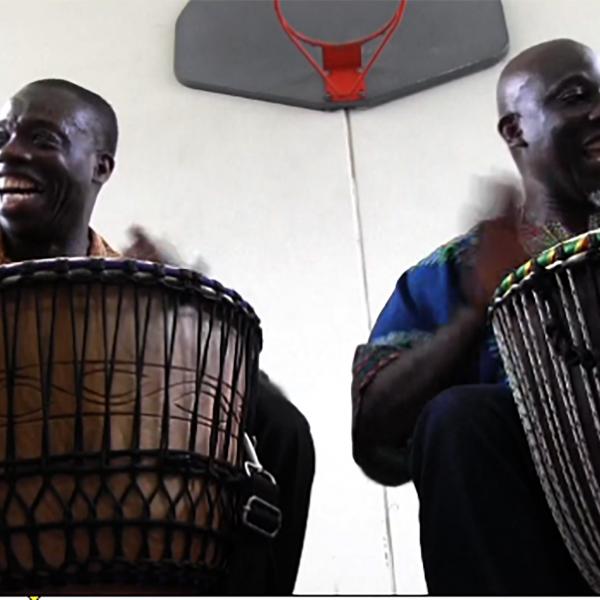
Natalie Chanin
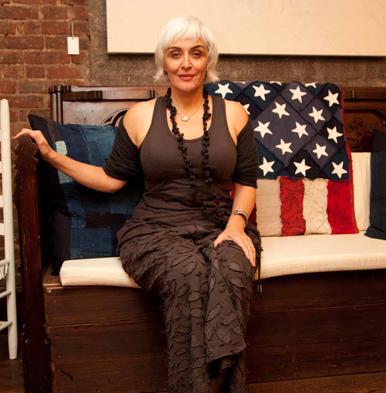
Natalie Chanin
Bringing Big Fashion to Her Small Town
NA-NC-Portrait2.jpg

Alabama Chanin, the fashion brand helmed by designer Natalie Chanin, is headquartered in a spacious former textile-manufacturing factory, which includes not just a design and production studio but also event space and a public café. But the most unique aspect of the company’s headquarters are implied in its name: the company is based not in one of the known fashion meccas but in Florence, Alabama, a town boasting a population of around 40,000. Natalie Chanin grew up in Florence but after college headed to New York City where she made a name for herself as a designer and stylist. Having grown up with a deep respect and passion for her community’s tradition of hand-sewing, Chanin eventually found herself heading back home, the perfect place to re-envision her company as a brand rooted in both community and tradition. Alabama Chanin works with independently contracted local seamstresses and tailors, helping to revive the faltering textile industry in the area. Here in her own words, Chanin describes the generosity that pervades the company and why, ultimately, there’s no place like home.
The Alabama Chanin Origin Story
I have a degree in environmental design from North Carolina State University. I graduated in 1987, and at that time environmental design literally was a term that described more of a Bauhaus training. So there was graphic design, product design, landscape, architecture, and textiles, and my degree is in environmental design with a textile emphasis. When I graduated, I wound up working in New York on Seventh Avenue [the fashion district]. Later I went to the other side of the fashion industry and became a stylist. It was on a sabbatical from my life as a stylist that I began hand-sewing, and conceptualized the making of [the documentary film] Stitch and what eventually became Alabama Chanin.
It originally began with a company called Project Alabama [which I left and then] reopened under the name Alabama Chanin. Project Alabama was based on the hand-sewn techniques that are, I would say, inherent to rural communities. I think you find all over the world in little communities that people still do some form of handwork. I was living in New York and wanted to make these hand-sewn garments and couldn't really find a manufacturer for them, and so came a moment of epiphany. I realized that there were all these quilters still in my community where I'd grown up and that, if I was going to get these sewn by hand and in this way that I wanted them sewn, I was going to need to come home to my community. Honestly, that first trip down here, I really saw this kind of as an art project. I wanted to make a film and I wanted to sew those shirts, and I didn't really foresee everything that was going to come out of it.
I think a lot of times people think I have this really clear vision about where this was going, and I think it was more that I just fell into it. I followed my heart, and it grew into this business that is still here today through many trials and tribulations. I came home to make these shirts, and we wound up selling them that very first session to Barney’s and La Clara of Paris and all these very fancy stores, which is kind of the opposite of how they were made.
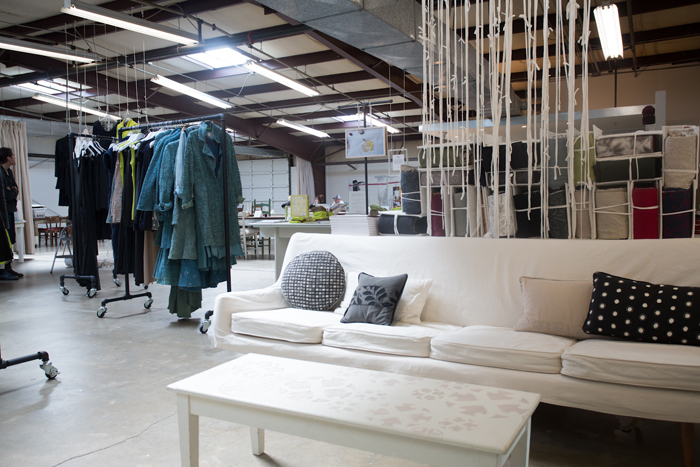
On the Community-Based Business Model
People have said to me a lot, “You're so generous.” We call it open-sourcing. I took that term from Wired magazine, really from Chris Anderson. [There was] a whole issue titled "Open Source" and it came with a CD of music that were open-source pieces that people could do whatever they wanted with them…. We were working at that time from a three-bedroom brick ranch house on County Road 200, ten miles outside of Florence, Alabama, and it was the antithesis of this fabulous fashion industry. At the time we were working with recycled t-shirts so I spent a lot of my nights in the basement of this old houses that my grandaddy built… sorting through Goodwill t-shirts. It's the antithesis of glamour or elitism or any of these things…. We were working with these contractors who were working in their own homes—mainly women—so these artisans were picking up pieces from us and taking them to their place of business, to their job, to their kid’s school, or wherever they wanted to work on them and were sewing these pieces and then bringing them back and selling them to us. Then we were assimilating them and selling them to the stores. Because we had so many people working in so many different locations, I had to come up with a guideline [for making the clothes]. There had to be kind of a code for everyone to understand what it was that we were doing. I had done this little handmade, handwritten book. Literally I wrote it with a pencil on a piece of white paper, like 8.5-by-11-inch paper, and had taken it to the local copy store and made 52 copies of it, or however many artists we had at that time. And each of the artisans that started with us got this little book called “Our Sewing Guide.”
I got a call one night from an agent who said, “Would you like to write a sewing book?” And I was like, “Oh, I've written one already,” talking about my little handwritten book. But the truth of the matter was that it seemed like a good idea to me, because people in the press were talking about elitism and how our pieces are so expensive. I thought, “You know what, I didn't invent things. Why don't we just open up our techniques and then people can make them for themselves?” You know, a lot of people in the fashion industry, my friends and colleagues, are like, “Natalie, that is crazy. You cannot do that. You’re putting a nail in your own coffin because nobody will buy your cloths once you teach them how to do these things.” I have to say I was kind of nervous when the first book came out, but what happened was just the opposite. People read the books and started to work with the techniques and they were like, “Oh, now I understand why these pieces are worth so much.
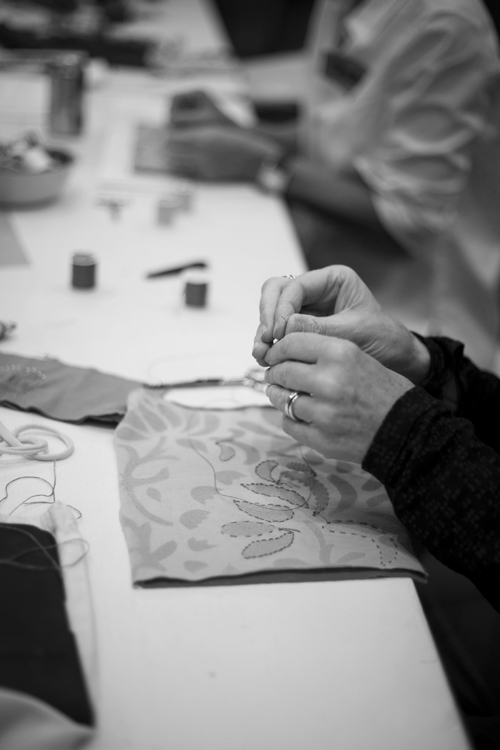
On Generosity and Growing the Community
People started e-mailing us: “We can't find enough recycled materials. Can you just sell your organic cotton?” We had a little teeny online store and we started selling bolts of cotton or just cotton by the yard. It’s been like an open conversation with this greater community that really created that part of our business. [People] talk about my generosity, but it’s their generosity in loving to do this and wanting to use these organic materials…. We sell books, we sell fabric, we sell kits.... We have another book coming out next spring. There's this whole giant community that's even outside our community that is helping to preserve this cultural art. So I don't know who's more generous—us or them? The people who come to do our workshops, by signing up, are helping to support the larger community. Because it's very expensive what we make, you know. The artisans take a larger percentage of the total package than would normally happen in a company. I think people sometimes feel like the pieces are so expensive so we must be making a fortune, but we have a very beautiful but modest community here. Nobody in the company has huge amounts of money, but we have a job that we love to do and we feed our families and we have a beautiful workplace to come to every day. And so those people who are paying to come to our workshops are helping to pay for the whole picture. The workshops aren't that expensive either.
The only thing I can say is, yes, maybe we made the first step toward generosity in open-sourcing, but I think there were so many people doing it at that time, this thought of the interweb opening up and all these things cracking open. If you think about the amount of transparency that’s happened since the year 2000, it's incredible. It's very difficult for a company today to cover up some kind of human trafficking or abuse of human rights or poor ecological stewardship. There are still people that are doing it, but every day the world becomes more transparent. I feel like we adopted those things very early. It seemed like the right thing to do. And every time we have done the right thing, it's always been right for us. It's funny how it works that way.
I think it's so beautiful to have a community that's filled with that generosity of spirit. We were talking about it today in our business meeting [how] one person can make such a difference. We have 40 people on staff now, and if you have one bad person, it makes such a difference in the spirit of the company. But if you have one person who's really good and so generous about helping and they infuse passion in the department, it makes all the difference in the world. I do think that it's not been an easy time for America or anywhere globally. The economy's been bad, a lot of people are losing their jobs, there's struggle. And I think that commitment to sustainability and above all [to what I call] cultural sustainability, which for me means community, it makes a difference and every voice is heard.


